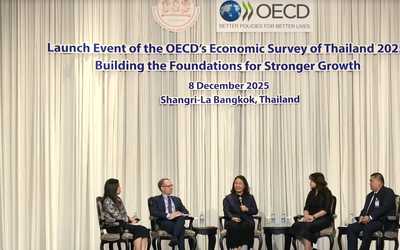Labor Income Inequality in Thailand: the Roles of Education, Occupation and Employment History
Abstract
Thailand's income inequality has reportedly declined since the mid-1990s. This paper examines possible mechanisms underlying the dynamic patterns of the country's labor income inequality. Using the Thai labor force survey between 1988 and 2017, we document that the country's reduction in income inequality is likely driven by the fact the earnings at the bottom part of the distribution have become more similar. The median wage gap between college and non-college workers, however, still gets larger over time. Our key explanation is the changes in education-occupation composition. Recently college graduates are no longer concentrated in high skill jobs. A larger share of secondary educated workers works in low-skill jobs instead of the middle-skill ones. Using panel administrative data from the Thai Social Security Office, we find that wage disparity can also be explained by employment history. The high wage earners earn more since they enter the market, and the gap gets wider as the workers age. Additionally, the top of the group can command higher wages by working at a large firm or switching to a new job. These findings highlight the fact that to tackle the income inequality issue, the country needs to understand the underlying mechanisms behinds its dynamics.












